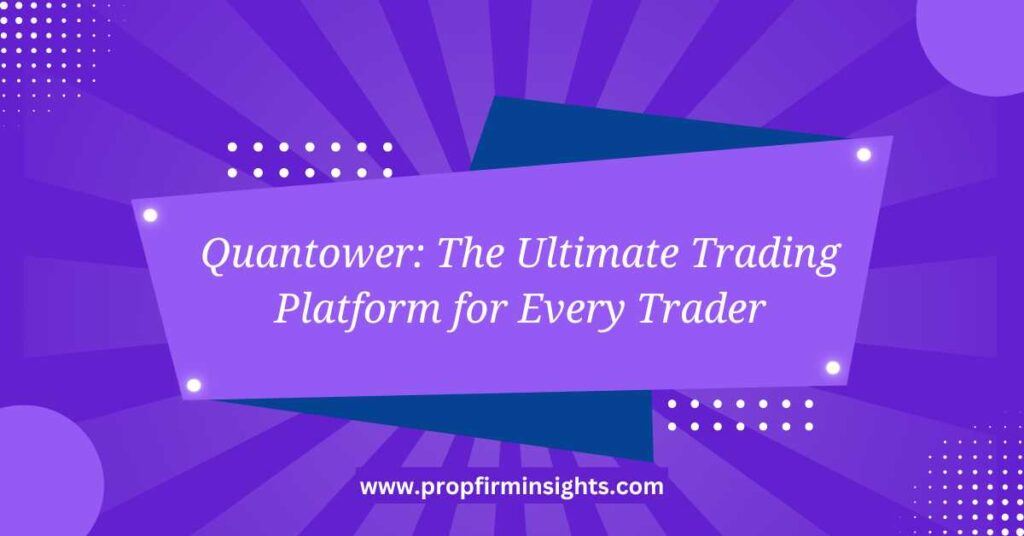If you are a trader who wants to maximize returns but is facing capital constraints, you cannot be alone in this. Many traders face the desire to scale their strategies and still need more funds to exploit larger market opportunities.
Fortunately, prop firms USA offer an answer by allowing traders to access significant capital and more sophisticated resources. These firms will enable you to trade with money belonging to them, earning a portion of the profits for maintaining it, so it’s easier to scale your trading and enhance your revenue-generating ability.
Want to know which prop firms are best for you? Keep reading to learn everything you need to make the right decision.
How Do Prop Trading Firms Operate?
Prop Firm USA works on a profit-sharing model. Traders can access the firm’s capital to place big positions they otherwise couldn’t afford. This leverage enables them to maximize returns. In return, the firm shares some of that profit with the trader. Normally, the percentage retained by the firm is between 20% to 50%.
Most firms also have certain risk limits; otherwise, there would be a misuse of capital, and strict control measures are placed on traders’ risk management. However, the firm’s success depends highly on the continuous returns that a trader can get, thereby creating a win-win relationship between the two parties.
Also, Read About the List of Prop Trading Firms
Advantages of Trading with a Prop Firm
Trading between a prop firm in the USA has various benefits, particularly for experienced traders:
- When traders join a prop firm, they have full capital access, making it easy to trade larger positions and generate more remunerative returns.
- Prop firms offer higher leverage levels that can multiply returns (although this also magnifies potential losses).
- Many firms provide advanced platforms and trading tools that give the trader an edge.
- Prop firms have low barrier costs to entry, meaning traders only need a little personal capital to begin trading.
Prop Firms vs. Retail Brokers: What’s the Difference?
An essential closeness between prop firms in the USA and retail brokers is that prop firms permit traders to trade employing the firm’s support, while retail brokers require the funds to be traders’ own. Another factor is leverage. Leverages are generally greater in prop firms as compared with retail brokers. In addition, retail brokers generate revenue by taking commissions and fees on the trade; prop firms, however, generate income off of profits that they acquire from their traders.
Additionally, high-frequency trading strategies that depend more on the short term tend to focus more on prop firms. However, retail brokers, including long-term investors, service clients with different trading styles.
Prop Trading Firms in USA
Prop Trading Firms in USA provides numerous types of prop firms USA that service specific styles and trading strategies. While some are for day traders providing fast-moving environments for short-term price movement specialists, others are swing traders, holding trades for several days or weeks. Some prop firms also cater to algorithmic traders, providing platforms that they can use to develop and implement automated strategies.
Some prop firms specifically target amateurs and give their trainees a full training and mentorship program. In contrast, others require the trader to have some experience before accepting him into their fold. The best choice will depend on your level of skills, strategy, or other goals as a trader.
How do you choose the right prop firm?
Selecting the right prop trading firm in the USA is never too easy:
- You would consider the firm’s profit split. Some firms give a higher percentage to the trader, while others take a large chunk. You would also consider the firm’s risk management policies and how much capital the trader could access next.
- One should look for a trading platform and tools that are compatible with one’s trading style. Another consideration is whether the company provides training or mentoring for beginner traders.
- Choose a prop firm with a good reputation, fees clearly explained, and there are mostly encouraging comments from other traders.
What Is Prop Firm Leverage?
Perhaps one of the biggest benefits of usa prop firms are leverage. This is because levers allow customers to control a large position with relatively little capital. For instance, if the leverage ratio is 10:1, you can use only $1 of your money to prevent $10 in the market.
This results in much greater profits if the trade succeeds, but losses can also get amplified; hence, tight risk management is important. Prop firm traders who work for the prop firm are highly prepared to handle leveraged positions not to incur huge losses that can potentially wipe out their trading account.
Popular Prop Firms in the USA
Many popular prop firms in the USA have established themselves as top industry players. Among these are top-grossing ones, such as Maverick Trading, Topstep, and SMB Capital. Such firms offer diversified trading opportunities ranging from futures to forex and equities and provide traders with advanced tools and resources.
Each has its unique trading environment, profit-sharing structure, and risk management policies. They have successfully built a vibrant community of traders who can reap from the firm’s resources and capital while zealously pursuing their trading strategies.
Training and Education of Prop Firms
All prop firms in the USA offer comprehensive training to both novice and expert traders. Such programs are designed to make participants proficient and mature in the fast-moving world of proprietary trading. The primary components of training are technical analysis, risk management, trading psychology, and high-tech interfaces.
Some companies offer mentorship, which is a guide for new traders by older ones on how to maneuver in the market. This educational support is essential for those who want to perform better and make maximum profits in a prop firm.
Profit Split at a Prop Firm Explained
The profit split agreement can be one of the most important factors in choosing a prop firm in the USA. This agreement determines the percentage the trader takes home as profits and the percentage retained by the firm. Profit sharing tends to vary from house to house but generally falls between 50% and 80% in the trader’s favor.
Some firms accommodate higher profit splits but charge the trader for additional services, like training. Before signing up with a prop firm, it would be good to understand the share of the profit plan and whether the firm charges for any other fee besides the cost of the platform or data feeds.
Prop Firms and Risk Management Strategies
Risk management is an important part of a usa prop firms. The firm has strict rules that limit the risk a trader can take to protect the firm’s capital. Common measures include daily loss limits, stop-loss orders, and the maximum leverage available to the trader.
Some firms also require traders to close their positions when a particular drawdown level is reached. Following such loss management measures is important in achieving long-term success at prop trading since they enable both the trader and the firm to avoid loss while enjoying stable profitability.
Regulation of Prop Firms in the USA
The regulatory environment for prop firms in the USA is a way of doing business ethically and in the best interest of traders. Most prop firms are registered with FINRA or other regulatory bodies that guarantee that they adhere strictly to guidelines regarding trading practices, capital requirements, and transparency.
As a precaution, it should possess all the required credentials and comply with the industry’s current requirements. This may provide some assurance and relief since regulated firms tend to be more transparent about their operations and have a greater propensity to maintain fair practices.
Future of Prop Trading in the USA
Prop trading firms in the United States have promise in the future, with continuous growth in technology. The evolution of algorithmic trading, machine learning, and artificial intelligence is changing the way prop traders execute trades and, more importantly, risk handling.
As such, with advancements in these technologies, prop firms will likely offer even more advanced tools and resources useful to traders looking to gain an edge in the marketplace. In addition, advancements in the interest in cryptocurrencies and digital assets might attract prop firms into this new market and provide traders with better development opportunities.
Issues in Prop Trading
In conclusion, prop trading has many pros, but it also has challenges. The biggest problem is high leverage, which sometimes increases profit and loss in one go. Prop shops in USA normally demand very strict discipline in enforcing rules on risk management, yet the trader still has to adhere to each strategy stringently.
A major challenge here is the force of consistency. Traders working under prop shops are usually in competitive environments with anticipated high returns. Lastly, all these costs, training, platforms, and overheads may eventually impact a trader’s profitability.
Prop trading in USA might be a business possibility for the high-skill trader who wants to earn more, using their earning capacity to the maximum and the funds and capabilities of a prop trading firm. Still, it is anything but easy, given that risks are still tied to the high leverage and pressure from performance.
To most traders, joining a prop firm sounds very rewarding if they have the right mix of discipline, strategy, and risk management skills. For a proprietary trader considering entering this line of company, choosing a firm that aligns with the person’s trading technique and goals is important.
Also Read About: 20 Best Prop Firms For Futures Trading in 2024
(FAQs)
What are some of the advantages of taking an offer to join a prop firm in the United States?
These advantages include exposure to huge capital, high leverage, better tools, and resources for trading. Trading in a professional setting will also help some traders and expose them to several training sessions and mentorship that might possibly improve their skills.
How do profit splits work in prop firms?
Profit splits are the amounts of profits the trader keeps versus the amounts the firm takes. Generally speaking, a firm may allow a trader to retain 50% to 80% of their earnings, depending on the terms of the firm. Firms can also deduct fees for services or platforms.
Are prop firms in the United States regulated?
Bodies like FINRA must regulate prop firms in USA. They must also be appropriately regulated to ensure transparency and ethical trading.










